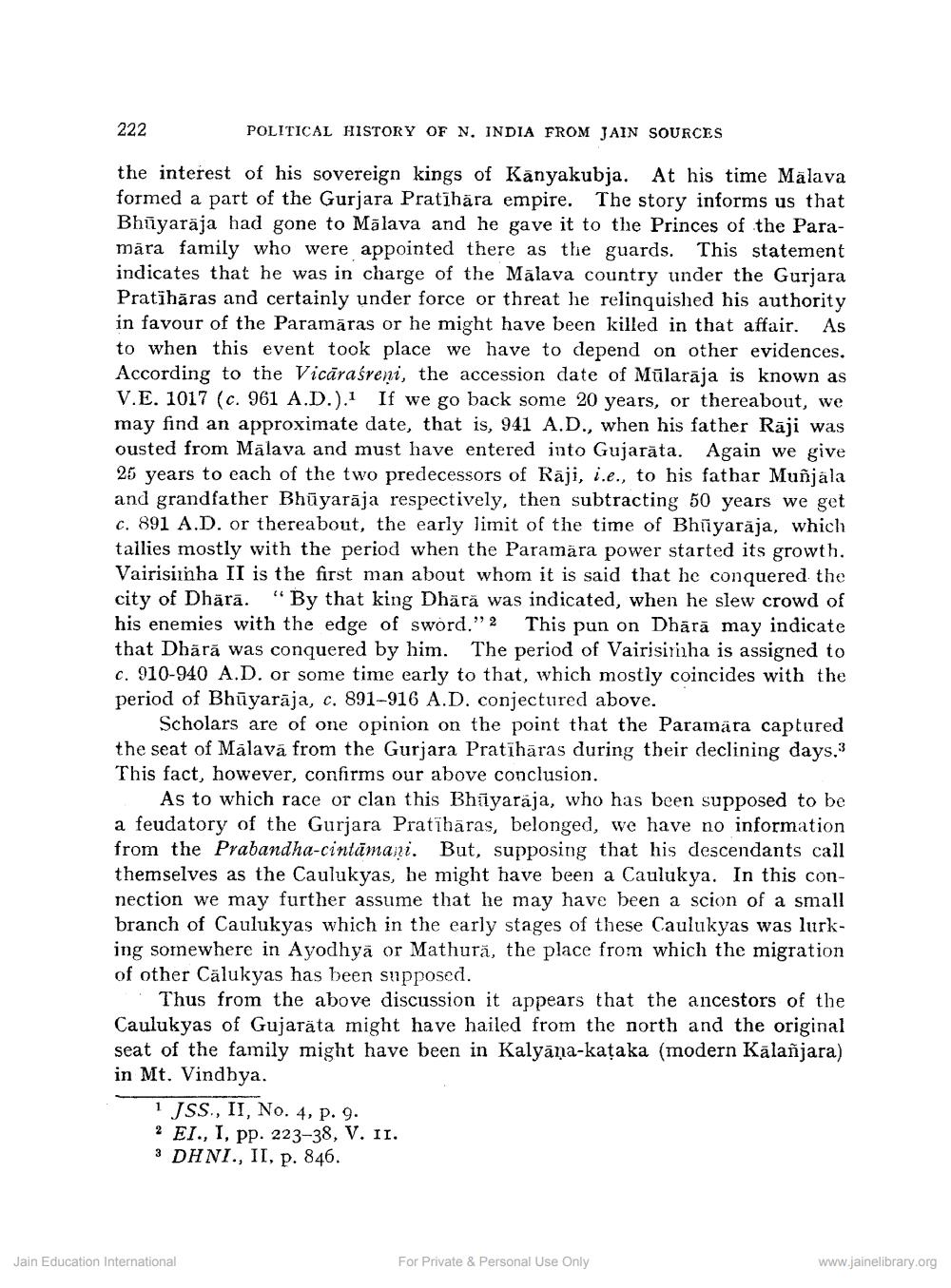________________
222
POLITICAL HISTORY OF N, INDIA FROM JAIN SOURCES
the interest of his sovereign kings of Kanyakubja. At his time Malava formed a part of the Gurjara Pratīhāra empire. The story informs us that Bhūyaraja had gone to Mālava and he gave it to the Princes of the Paramāra family who were appointed there as the guards. This statement indicates that he was in charge of the Malava country under the Gurjara Pratihāras and certainly under force or threat he relinquished his authority in favour of the Paramāras or he might have been killed in that affair. As to when this event took place we have to depend on other evidences. According to the Vicāraśreni, the accession date of Mūlaraja is known as V.E. 1017 (c. 961 A.D.).1 If we go back some 20 years, or thereabout, we may find an approximate date, that is, 941 A.D., when his father Rāji was ousted from Mālava and must have entered into Gujarata. Again we give 25 years to each of the two predecessors of Rāji, i.e., to his fathar Muñjala and grandfather Bhūyarāja respectively, then subtracting 50 years we get c. 891 A.D. or thereabout, the early limit of the time of Bhiyarāja, which tallies mostly with the period when the Paramāra power started its growth. Vairisimha II is the first man about whom it is said that he conquered the city of Dhärā. "By that king Dhäră was indicated, when he slew crowd of his enemies with the edge of sword.” 2 This pun on Dhārā may indicate that Dhārā was conquered by him. The period of Vairisirha is assigned to c. 910-940 A.D. or some time early to that, which mostly coincides with the period of Bhūyarāja, c. 891-916 A.D. conjectured above.
Scholars are of one opinion on the point that the Paramära captured the seat of Mālava from the Gurjara Pratīhāras during their declining days.3 This fact, however, confirms our above conclusion.
As to which race or clan this Bhiyaraja, who has been supposed to be a feudatory of the Gurjara Pratīhāras, belonged, we have no information from the Prabandha-cintămari. But, supposing that his descendants call themselves as the Caulukyas, he might have been a Caulukya. In this connection we may further assume that he may have been a scion of a small branch of Caulukyas which in the early stages of these Caulukyas was lurking somewhere in Ayodhya or Mathură, the place from which the migration of other Cälukyas has been supposed.
Thus from the above discussion it appears that the ancestors of the Caulukyas of Gujaräta might have hailed from the north and the original seat of the family might have been in Kalyāņa-kataka (modern Kālañjara) in Mt. Vindhya.
1 JSS., II, No. 4, p. 9. 2 EI., I, pp. 223-38, V. II. 3 DHNI., II, p. 846.
Jain Education International
For Private & Personal Use Only
www.jainelibrary.org




